


George Hancock (1849- 1924) was an architect active in North Dakota, Montana and Minnesota. [1]



George Hancock (1849- 1924) was an architect active in North Dakota, Montana and Minnesota. [1]
George David Hancock was born in the village of Uley in Gloucestershire, England. He was educated at South Kensington Institute in London, England. He moved to Dakota Territory in 1882, settling in Fargo, North Dakota with his brother Walter Benjamin Hancock (1863-1929), when they were 33 and 17, respectively. Walter Hancock attended Syracuse University where he graduated with a degree in architecture in 1889. [2] [3]
After a fire destroyed much of Downtown Fargo in 1893, George and Walter designed around half of the replacement buildings. [3] After advocating for a 1917 law requiring architects in North Dakota to be licensed, he and Walter became the first two licensed architects in the state. The firm of Hancock Brothers to also operated open a branch office at Bozeman, Montana. [4] [5] [3]
Many of their works are listed on the U.S. National Register of Historic Places, with credit individually or as Hancock Brothers or variations. Their works include:

The former St. Stephen's Episcopal Church also known as St. Stephen's Church, is an historic stone Gothic Revival-style Episcopal church building located on the southeast corner of 3rd Avenue and 5th Street in Casselton, North Dakota, United States.

Wilson Brothers & Company was a prominent Victorian-era architecture and engineering firm based in Philadelphia, Pennsylvania. The company was regarded for its structural expertise.
Cole Building or Cole Block or variations may refer to:
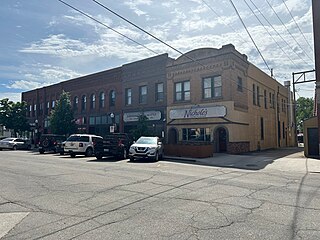
The Knerr Block, Floyd Block, McHench Building and Webster and Coe Building is a set of four buildings in Fargo, North Dakota that was listed on the National Register of Historic Places in 1983. The four buildings were built in 1900, 1902, and 1910. The oldest, the Webster and Coe building, was built in 1900 by a carpenter or contractor named Martel. The McHench Building was designed by the Hancock Brothers architects. The "four adjacent buildings constitute a solid front of excellent early turn-of-the-century commercial structures, displaying a continuity of fenestration and decorative brickwork."
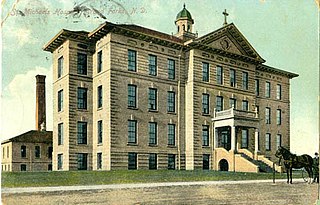
St. Michael's Hospital and Nurses' Residence is a property in Grand Forks, North Dakota that was listed on the National Register of Historic Places in 1995. It was also known as St. Anne's Guest Home and denoted 32GF14, it was builtin 1907. It was designed by architect George Hancock. Grand Forks architect William J. Edwards designed the Nurses' Residence in 1913.

Joseph Bell DeRemer (1871–1944), who lived and worked in Grand Forks, North Dakota, was one of the finest architects in North Dakota. Some of the important works produced by him or his firm, which included his son Samuel Teel DeRemer, include the President's House at the University of North Dakota, the Masonic Temple, and the Art Moderne United Lutheran Church and North Dakota State Capitol skyscraper. Joseph DeRemer also designed houses in the Grand Forks Near Southside Historic District, most notably the Tudor Revival house presently located at 521 South Sixth Street off Reeves Drive. His significant works include a number of buildings that are listed on the U.S. National Register of Historic Places.
The Dinnie Brothers was a construction firm in Grand Forks and Fargo, North Dakota. They built over 60 percent of the commercial buildings in Grand Forks, and much of downtown Fargo after the Fargo Fire of 1893. Both brothers were born at Dundas County, Ontario, Canada. They came to Grand Forks in 1881.

Link & Haire was a prolific architectural firm in Montana, formally established on January 1, 1906. It designed a number of buildings that are listed on the National Register of Historic Places.
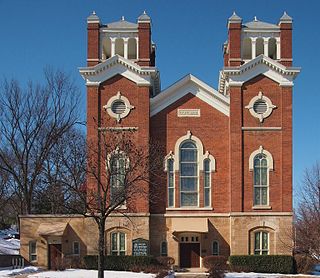
Charles N. Daniels (1828-1892) was an American architect active in Minnesota, North Dakota, and Washington.
Fargo Bridge & Iron Co. was a bridge company based in North Dakota in the early part of the 20th century.
Charles E. Choate was a U.S. architect who worked in Georgia, Florida, and Alabama. He designed numerous buildings that are listed on the U.S. National Register of Historic Places.
Grace Episcopal Church is a historic Episcopal church building is located at 210 C Avenue, South, in Minnewaukan, Benson County, North Dakota.

Grace Episcopal Church is an historic Episcopal church building located at 405 2nd Avenue, North East, in Jamestown, Stutsman County, North Dakota. Designed in the Late Gothic Revival style of architecture by British-born Fargo architect George Hancock, it was built 1884 of local fieldstone exterior walls and a wooden roof. Early parish records contain several assertions that George Hancock modeled the church after Christ Episcopal Church which had been opened in 1881, but if he did, it was only in a very general, not specific way. Hancock's later work St. Stephen's Episcopal Church is much more closely related to Christ Church, Medway. On December 3, 1992, Grace Episcopal Church was added to the National Register of Historic Places.
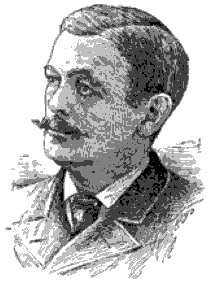
Milton Earle Beebe was an American architect who designed numerous buildings in Buffalo, New York, in Fargo, North Dakota, and elsewhere. He designed courthouses "at Warren, Smethport, Cambria, and Huntingdon in Pennsylvania, costing $100,000 each." Several are listed on the National Register of Historic Places. He also designed Early Commercial architecture buildings, residences, churches and public buildings.

Haxby & Gillespie was an architectural firm from Fargo, North Dakota. R. J. Haxby and William D. Gillespie were the partners. The firm "produced a number of important buildings throughout North Dakota." They designed many notable public, educational, commercial, and church buildings, in North Dakota, Minnesota, and Montana.

Joseph A. Shannon (1859-1934), known in at least one source as John A. Shannon, was an architect in Devils Lake, North Dakota.

Byron Vreeland (1844–1889) was an American architect practicing in Bozeman and Miles City, Montana, where he pioneered the profession.
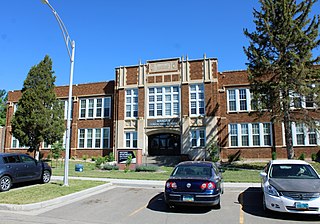
Gilbert R. Horton FAIA (1888–1985) was an American architect in practice in Jamestown, North Dakota, from 1913 until 1980.

The St. James Episcopal Church and Rectory in Bozeman, Montana was listed on the National Register of Historic Places in 1987. The listing included two contributing buildings.

Robert A. Ritterbush FAIA (1891–1980) was an American architect in practice in Bismarck, North Dakota, from 1920 until 1967.